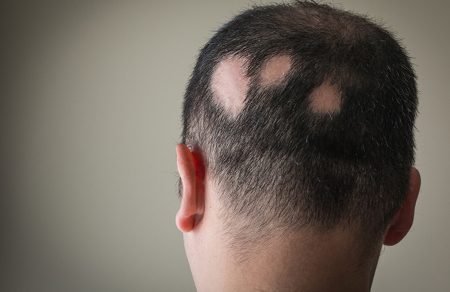Alopecia
Home » Alopecia

What is Alopecia?
Alopecia areata is a condition that causes small patches of hair to fall out. The disease occurs when the hair follicles are damaged by the immune system, causing hair loss. Sudden hair loss can occur on the scalp, eyebrows, eyelashes, and face, as well as other parts of the body, in some cases. It can also develop between instances slowly and recur after years. The condition can result in total hair loss, called alopecia universalis,
Causes of alopecia areata ?
Alopecia areata is an autoimmune condition. An autoimmune condition occurs when healthy cells for foreign substances are confused by the immune system. The immune system normally protects your body from foreign invaders, such as viruses and bacteria.
However, if you have alopecia areata, your immune system will attack your hair follicles incorrectly. Hair follicles are the hair-growing structures. The follicles are getting smaller, stopping hair production, leading to hair loss.
Symptoms:
Usually, Hair falls out in small patches on the scalp. There are often several centimeters or less of these patches. Sudden hair loss can occur on the scalp, eyebrows, eyelashes, and face, as well as other parts of the body, in some cases.
You can find hair clumps on your bed or in the shower at first. If the spots are on your head’s back, you may be noticed by someone. However, other health conditions may also cause hair to fall in a similar pattern. Loss of hair alone is not diagnosed with alopecia areata.
Some individuals may experience more extensive hair loss in rare cases. Usually this is an indication of a different type of alopecia, like:
- alopecia totalis, which is the loss of all hair on the scalp
- alopecia universalis, which is the loss of all hair on the entire body
Prevention & Medical treatments
A family doctor, internist, or gynecologist may conduct a basic health screening. Dermatologists are physicians who are specialized in skin, hair and nail problems and can provide more advanced hair thinning and loss diagnosis and treatment. There are certain medical treatments,
• Topical agents
• Injections
• Oral treatments
• Light therapy

